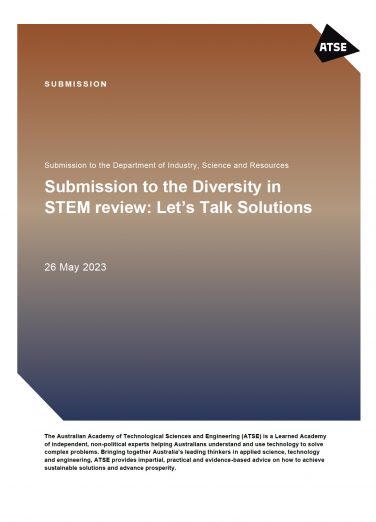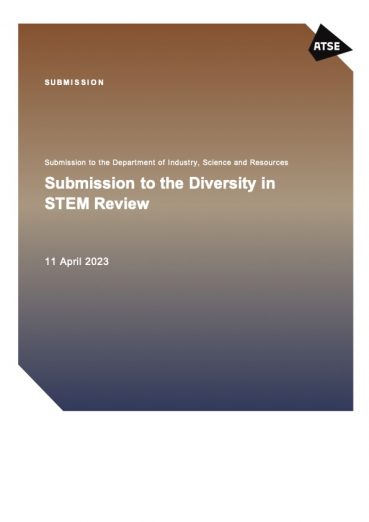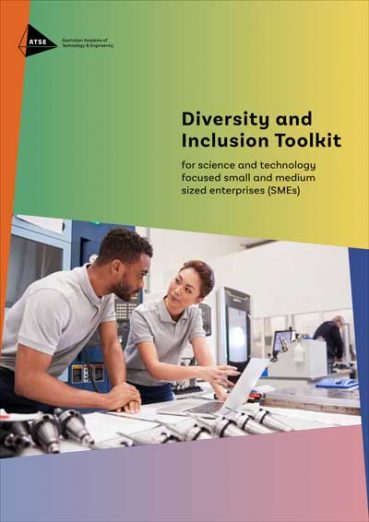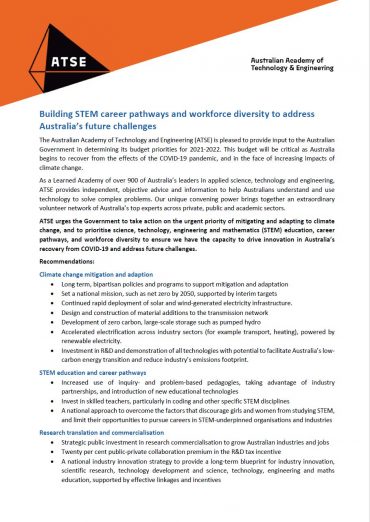The case for increasing diversity in science, technology, engineering and mathematics (STEM) sectors is undeniable. Increasing diverse participation can alleviate workforce shortages, increase productivity and innovation, attract international talent and learn from Traditional Knowledge. But Australia will not be successful at eliminating barriers to diversity in STEM unless we adopt a systematic and strategic approach to equity, diversity and inclusion.
The Diversity in STEM review is an ideal opportunity to begin the work of applying a sector-wide strategic approach to improving diversity, instead of the fragmented approach that has been adopted to date. The approach needs to encompass not just attracting a diverse STEM workforce, but also retaining, recognising and promoting that workforce, especially into leadership. While gender equity must be a core part of this approach, we must ensure discussions on diversity are not limited to participation of women and non-binary people. Action to increase intersectional diversity will require a cultural shift, based on strategic policy changes that are evidence-based, promoted by government, and led by the sector’s boards, CEOs and management teams. Leaders at all levels must take up the mantle of championing diversity, which is so often a burden thrust upon the very people already encumbered by its absence.
This submission, a response to the Let’s Talk Solutions questions, builds on ATSE’s previous submission to the Diversity in STEM review by highlighting how a systematic approach to diversity can be supported. ATSE’s previous submission recommended developing a whole-of-sector strategy for diversity in STEM including by evaluating programs and scaling up successful programs that support diversity across the STEM pipeline, apply an intersectional lens to enhancing diversity, and engage with mid-to-senior leaders of STEM organisations.
In addition to our previous recommendations, ATSE makes the following further recommendations:
Recommendation 1: Invest in high-quality research into the barriers to increasing diversity and inclusion to enable better program design and evaluation.
Recommendation 2: Develop a National Office for Diversity in STEM, supported by stable long-term funding, to provide national leadership and champion diversity in STEM.
Recommendation 3: Empower the National Office for Diversity in STEM to provide a central and dynamic repository of effective STEM-focused diversity strategies and programs, and encourage and facilitate their uptake across the STEM sector.
Recommendation 4: Promote the adoption of systematic and intersectional frameworks that enhance diversity and promote inclusion, including recruitment, training, pay equity, mentorship, flexible work arrangements and advancement into leadership.
Recommendation 5: Connect with and leverage the Australian Universities Accord and Australian Research Council reviews to develop career stability for early career researchers and more opportunities for career progression.
Recommendation 6: Work with the Australian research sector and public funding agencies to better align incentives to measurable targets and achievements related to intersectional diversity, equity and inclusion.



